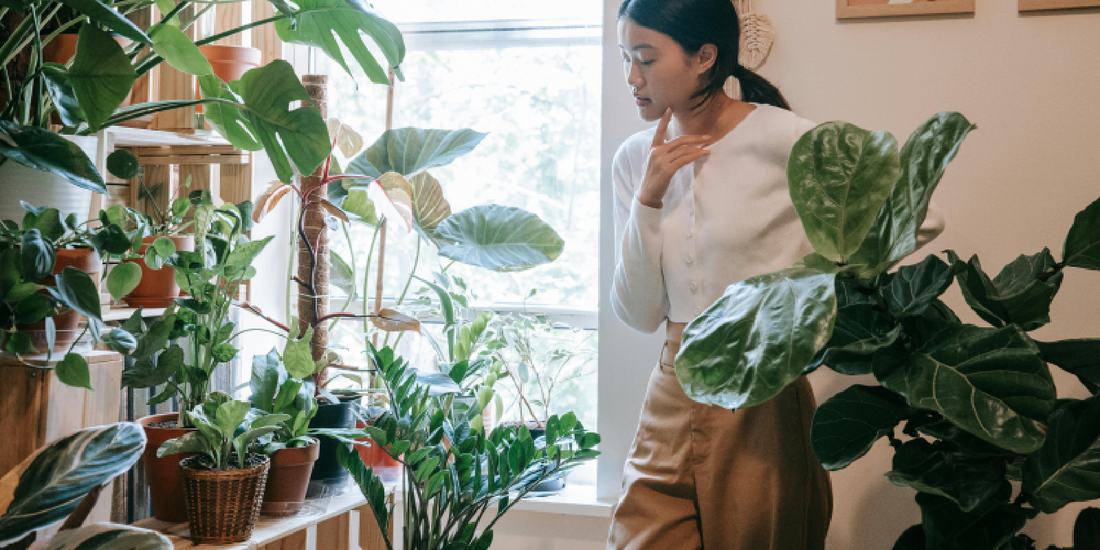
How to Repot Plants on a Multi-Tier Stand
Share
Introduction: Why Repotting Matters in a Vertical Garden
Indoor gardening has become more than a hobby—it’s a lifestyle that blends wellness, design, and sustainability. For plant lovers using vertical systems like the amoyls VerdantGlow S-Shaped 8-Tier Plant Shelf with Grow Lights, repotting is not just a plant-care task; it’s part of the rhythm that keeps your living space fresh and balanced.
Plants grow continuously, and their containers, soil, and root systems all have limits. When plants remain too long in the same pot, soil compacts, nutrients drain, and roots suffocate. Repotting restores balance, allows roots to breathe, and keeps the aesthetic of your stand crisp and beautiful.
But unlike a single potted plant on a windowsill, repotting on a multi-tier stand introduces new challenges: managing vertical space, balancing weight distribution, and ensuring each tier receives proper light after repotting. This article provides a comprehensive step-by-step guide to repotting plants on a multi-tier stand, supported by practical examples, design insights, and professional aftercare strategies.
Why Repotting is Crucial for Indoor Plants
1. Root Health and Growth
Roots expand continuously, and when confined, they coil tightly, creating a “root-bound” state. This restricts nutrient absorption, reduces water uptake, and ultimately stunts growth. Repotting allows roots to spread naturally.
2. Soil Renewal
Soil is not a permanent resource. Over time, it compacts, loses essential minerals, and may accumulate salts from fertilizers. Fresh soil restores balance, improving drainage, nutrient supply, and microbial activity.
3. Pest and Disease Prevention
Old soil can harbor fungus gnats, mold, or root pathogens. Repotting refreshes the growing medium, lowering pest risks.
4. Aesthetic and Functional Appeal
Multi-tier stands thrive on visual order. Repotting allows you to update pot sizes, colors, and arrangements, ensuring your VerdantGlow stand remains both functional and stylish.
When to Repot: Reading the Signals
- Roots protruding from drainage holes – classic sign of being root-bound.
- Soil dries excessively fast – roots occupy most space, leaving little soil.
- Foliage stress – yellowing, drooping, or stunted leaves.
- Cracked or deformed containers – plastic pots bulging under root pressure.
- Annual refresh – even if no visible signs, most plants benefit from fresh soil every 12–18 months.
For best results, repot during spring and early summer, aligning with natural growth cycles. Avoid deep winter, when most plants rest.
Preparation: Tools, Space, and Strategy
Before repotting, preparation ensures efficiency and minimizes mess:
- Select New Pots – Choose containers one size larger (about 2–3 cm wider in diameter). Ensure proper drainage holes.
- Soil Mixes – Match plants: succulents need sandy, fast-draining soil; ferns prefer moisture-retaining peat blends.
- Protective Setup – Place trays, newspapers, or waterproof cloth under your multi-tier stand. The VerdantGlow’s open-frame design makes cleanup easier.
- Gardening Essentials – Gloves, pruners, small spades, and spray bottles.
- Cleaning Supplies – Wipe the stand’s tiers and grow light surfaces to maintain brightness.
Step-by-Step: Repotting Process
Step 1. Remove the Plant Safely
- Lower pots from the stand slowly.
- Grip the base of the stem, invert gently, and coax the root ball out.
- If roots cling, tap the pot’s edges or use a flat tool.
Step 2. Inspect and Trim Roots
- Healthy roots: firm and white.
- Remove dark, mushy, or circling roots.
- Loosen dense tangles with fingers or a root rake.
Step 3. Prepare the New Pot
- Add a base layer of fresh soil.
- Position the plant so the crown remains at soil level.
- Backfill around roots, pressing lightly to eliminate air gaps.
Step 4. Water and Drain
- Water thoroughly until excess flows from the drainage hole.
- Let pots drain fully before replacing on the stand.
Step 5. Reposition Thoughtfully
- Place heavier pots on lower tiers.
- Rotate plants to balance growth and ensure even light exposure from built-in lamps.
- Keep similar species grouped for easier care routines.
Plant-Specific Repotting Strategies
Ferns
- Use moisture-rich soil with peat and perlite.
- Avoid deep burial; their crowns are sensitive.
- Repot annually to refresh dense roots.
Succulents and Cacti
- Choose sandy, fast-draining soil.
- Minimal watering post-repotting to prevent rot.
- Use shallow, wide pots for stability.
Leafy Foliage Plants (Monstera, Pothos, Philodendron)
- Require nutrient-rich loam.
- Add moss poles or supports for vertical growth.
- Large specimens belong on bottom tiers for stability.
Herbs (Basil, Mint, Rosemary)
- Refresh soil every season.
- Avoid oversized pots to maintain flavor intensity.
- Place mid-tier for easy access during cooking.
Orchids
- Use bark-based orchid mix.
- Repot every 18–24 months when bark breaks down.
- Ensure roots receive light and airflow.
Aftercare: Helping Plants Recover
Repotting stresses plants, so thoughtful aftercare is vital:
- Stable Light – Keep grow lights at consistent 10–12 hour cycles.
- Gentle Watering – Avoid drowning roots; water lightly but frequently.
- Pause Fertilization – Hold off feeding for 4–6 weeks.
- Humidity Adjustment – Mist foliage for ferns and tropicals.
- Monitor Stress Signs – Drooping is normal initially; prolonged wilt may require root recheck.
Styling and Aesthetic Tips for VerdantGlow
Balance and Harmony
Mix pot shapes but keep a unified color palette. Neutral ceramics pair well with lush greenery.
Functional Zones
Dedicate tiers to categories: herbs, succulents, flowering plants. This makes both care and styling easier.
Seasonal Refresh
Repot seasonal bloomers (like poinsettias or chrysanthemums) and rotate with evergreens for year-round vibrancy.
Interior Design Themes
- Minimalist Scandinavian – White pots, clean lines.
- Urban Jungle – Dense foliage with mixed heights.
- Contemporary Modern – Geometric pots, monochrome palette.
Common Mistakes to Avoid
- Upsizing pots excessively, causing root rot.
- Forgetting drainage holes.
- Using generic soil for all plants.
- Returning wet pots to the stand without proper drainage.
- Over-fertilizing newly repotted plants.
FAQ: Repotting on a Multi-Tier Stand
Q1. Can I repot all my plants at once?
Not recommended. Spread tasks over weeks to avoid overwhelming both you and your plants.
Q2. Do I need to repot newly purchased plants immediately?
Not always. Allow them to acclimate for 2–3 weeks before disturbing roots.
Q3. Should I clean my stand after repotting?
Yes. Soil dust can dim grow lights and affect aesthetics. Wipe shelves and light covers.
Q4. How do I know if I chose the right soil?
Observe drainage speed: too fast means soil is sandy; too slow means it’s too compact. Adjust accordingly.
Q5. Can multi-tier stands handle heavy ceramic pots?
Yes, but always position heavier containers on lower levels for stability.
Conclusion: Repotting as Renewal
Repotting is not just maintenance—it’s renewal. For those using the amoyls VerdantGlow S-Shaped 8-Tier Plant Shelf with Grow Lights, it means more than healthier roots. It transforms your vertical garden into a balanced ecosystem where design and function merge seamlessly. By mastering repotting, you ensure your plants not only survive but thrive—creating a living, breathing centerpiece in your home.
